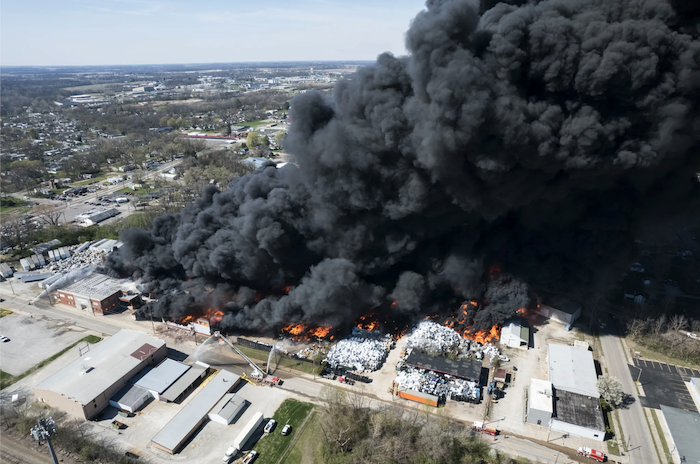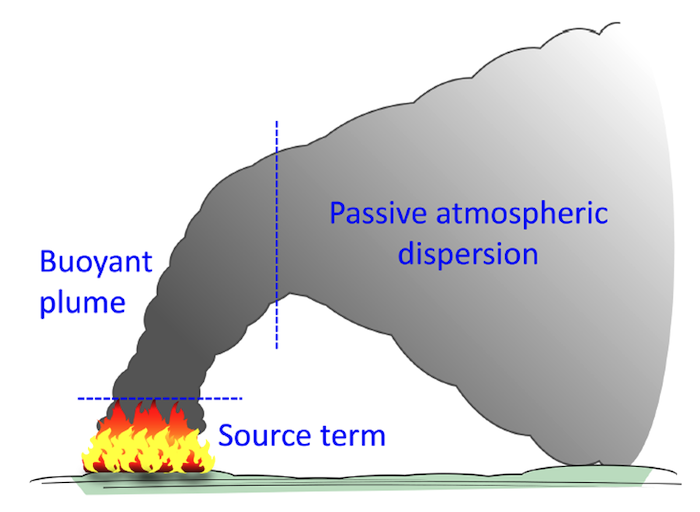Modeling Plumes from Fires Basic

Example of a fire plume from an industrial fire that took place in Richmond, IN, as reported on by WOWK 13 News.
Reading Guide
Large industrial fires are major air pollution emission events for episodic exposure. Such events release large amounts of pollutant gases (carbon monoxide, nitrogen oxides, toxic hydrocarbons) and particulates (smoke, PM2.5, trace metals), often over many days.
In terms of dispersion, large fires are characterized by high thermal buoyancy and plume rise. This lofts fire plumes high up in the planetary boundary layer (PBL) often penetrating above the inversion layer capping the PBL. Large fires also can induce fire-driven circulations within the PBL, which can disperse fire pollutants in a manner more complex than what would be due to ambient turbulence alone.
Modeling air pollutant concentrations from stationary sources is generally done through either steady-state plume (e.g. AERMOD) or non-steady puff (e.g. CALPUFF) Gaussian dispersion models. The emission, plume rise, and plume penetration formulations in these models, however, are developed for smokestacks, which have well-defined emission characteristics (stack diameter, volumetric flow rate, pollutant mass flux) and small to moderate plume buoyancy. Large fires, on the other hand, have complex emission characteristics and very large plume buoyancy. Standard Gaussian models therefore are not appropriate for large fires.
Two alternative modeling approaches are the Fire Dynamics Simulator (FDS) computational fluids dynamics model developed by the U.S. NIST, and the BUOYANT steady-state air pollution dispersion model developed by the Finnish Meteorological Institute. References for these models are provided below in the Material section. The key aspects of these models highlighting their suitability to simulate dispersion from large outdoor industrial fires are as follows:
Fire Dynamics Simulator (FDS)
A computational fluids dynamics model that can directly simulate the three-dimensional flow including large plume rise, fire-induced circulations, and ambient wind dispersion.

Example of an FDS run with a neutral case, where the lapse rate is set to adiabatic.
BUOYANT
A Gaussian model with a plume rise parameterization specifically designed and tested for fires.

A schematic presentation of the flow regimes of the dispersion of a fire plume. Image adapted from Kukkonen et al (2022).
For an intermediate level discussion of this fire plume topic, please see this lecture deck that Dr. Frank Freedman presented as part of the Wessex Institute 2023 Short Course on Introduction to Air Pollution Modeling.
Material
Guide prepared by F. Freedman (01/2024). For corrections or expansions please contact us.